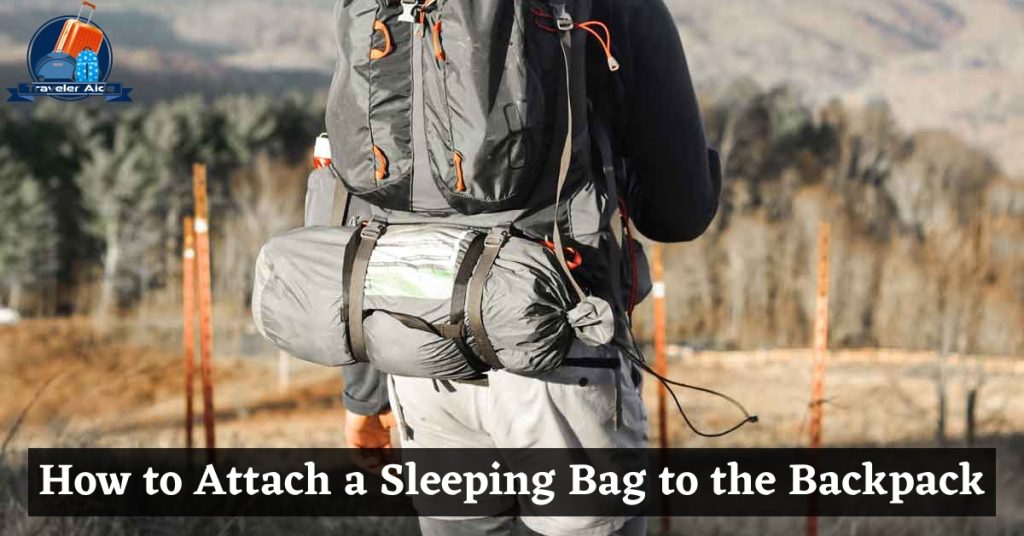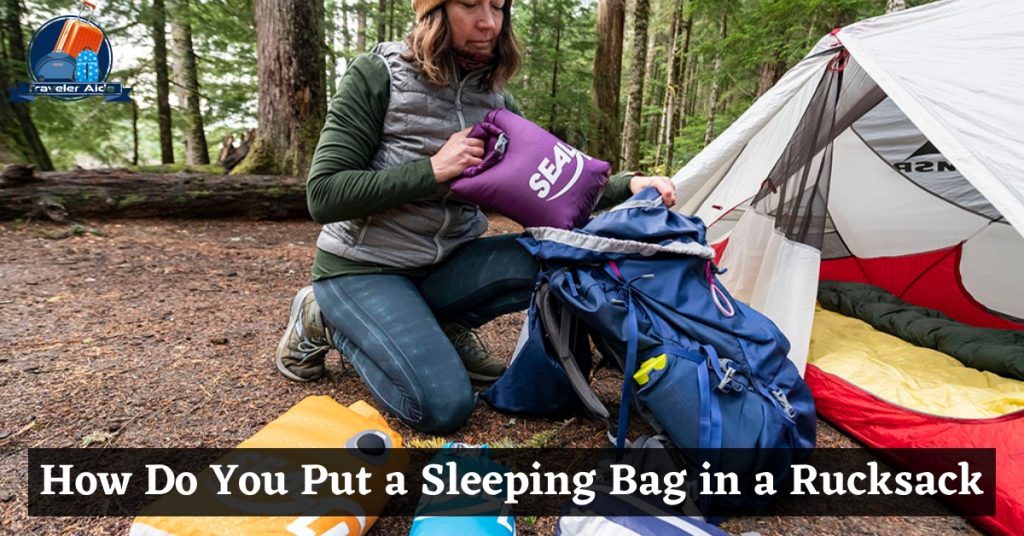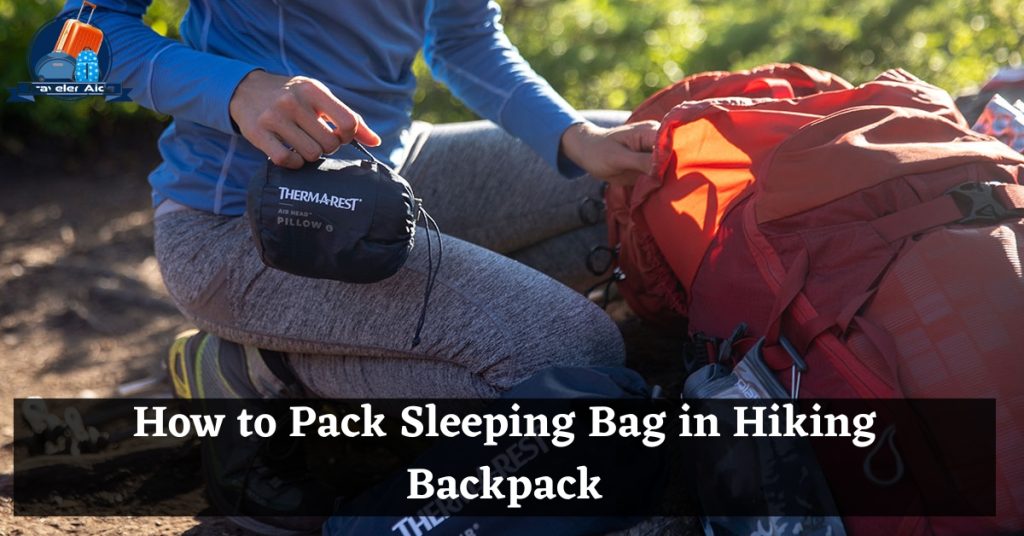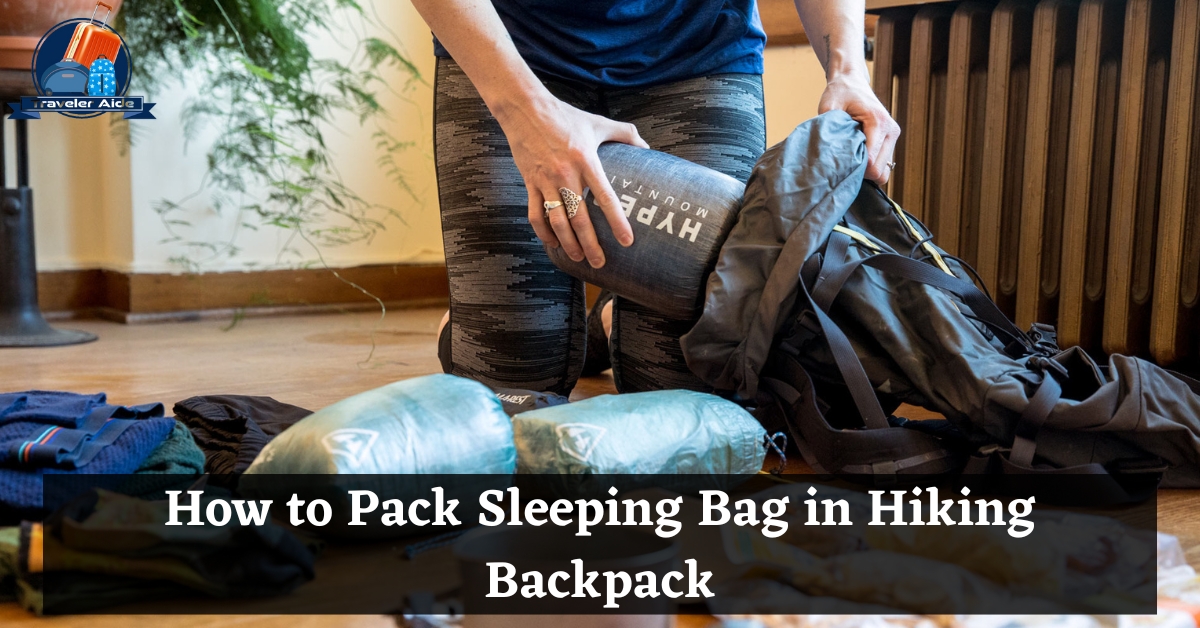Hiking is one of the best things you can do for your health and well-being. One of the most essential items for a hiker is a sleeping bag. And if you’re looking to make it even better, there are a few things you can do to improve your experience. One of those things is attaching a sleeping bag to your hiking backpack. Sleeping bags help protect you from the cold and keep you cozy on long walks or hikes. Plus, they come in a variety of colors and styles, so you can find the perfect one for your environment. Here are some tips on how to pack sleeping bag in hiking backpack.
What is a Sleeping Bag?
If you are planning to go hiking, sleeping bags are a great addition to your hiking gear. Sleeping bags provide warmth, especially at night. But they did not all have to sleep outdoors in sleeping bags. They used sleeping bags in cars and small boats. A sleeping bag you can easily packing in hiking backpack
For hiking, there are three types of sleeping bags:
Rectangular, rectangular bags are best suited for sleeping in a tent, while they used rectangular sleeping bags with hoods on chilly nights.
Mummy-Mummy bags are ideal for backpacking. It can easily carry on backpack for travelling .They keep the body warm by preventing air from flowing around it. They are easier to pack and carry as compared to rectangular sleeping bags.
Claw – they also known claw bags as inflatable air beds. These bags are great for camping because they inflate when inflated.
How to Attach a Sleeping Bag to the Backpack

Sleeping bags are very useful. They keep you warm at night when you are sleeping outdoors. There are different sleeping bags, depending on their usage. But all sleeping bags have one thing in common: they are large and bulky. Usually, they are used for camping, hiking, and other outdoor activities.
When sleeping outdoors, lug your sleeping bag with you. This makes hiking with a sleeping bag a big hassle. So, there has been some effort to make these sleeping bags more compact and portable. You can use a backpack or bag to carry your sleeping bag. But you will still carry your sleeping bag around on your back, which is not always comfortable.
Where Do You Put a Sleeping Bag on a Hiking Backpack?
When packing a backpack for a hike, it is important to consider where to place your sleeping bag. Sleeping bags can take up a lot of space and weight, so it is important to pack them in a way that will not throw off the balance of your backpack. One option is to attach the sleeping bag to the bottom of the backpack using the straps that are provided.
This keeps the sleeping bag out of the way and close to your center of gravity, making it easier to carry. Another option is to stuff the sleeping bag into one of the side pockets of the backpack. This can help free up space inside the main compartment of the backpack for other items.
It also puts the weight closer to your back, which can make carrying it more comfortable. There is no wrong way to pack a sleeping bag on a hiking backpack as long as it does not make your backpack unbalanced or uncomfortable to carry. Experiment with different ways of packing it until you find what works best for you and your gear.
How Do You Put a Sleeping Bag in a Rucksack?
Assuming you want tips on how to pack a sleeping bag in a backpack: First, find a soft, dry spot to lie out your sleeping bag. If your sleeping bag is wet, wring it out as much as possible before packing. Open up the hood and lay the bag flat. Next, fold the bottom third of the bag towards the center.
Then fold the top third of the bag down towards the center, overlapping the first fold. Your sleeping bag should be about one-third of its original size. Now roll the sleeping bag from one side towards the other until you have a long cylinder. Tuck in any loose ends so they don’t get caught while you’re packing.
To pack your sleeping bag in your backpack, start by finding a corner or edge of the backpack to stuff one end of the rolled-up sleeping bag into. Once that end is tucked away, continue rolling until they pack the whole thing into your backpack.
How Do You Attach a Tent Bag to a Backpack?
When you are out camping, one of the most important pieces of gear that you will have with you is your tent. Your tent will keep you dry and protected from the elements, so you need to make sure that you secure it to your backpack.
There are a few different ways that you can attach your tent bag to your backpack, and each method has its own advantages and disadvantages. One way to attach your tent bag to your backpack is to use the compression straps that are on the sides of the pack. To do this, thread the compression strap through the loops on the tent bag and then cinch it down tight. This method is quick and easy, but it’s difficult to get the straps tight enough so that the bag doesn’t move around too much while you are hiking. Another way to attach your tent bag to your backpack is by using some kind of carabiner or clips. This method allows you to clip the bag onto the outside of your pack, which frees up space on the inside for other items. But, if you are using this method, be sure that whatever clips or carabiners you use are rated for holding heavy loads, as a tent can weigh when they are packed full of gear.
Finally, another option for attaching your tent bag to your backpack is by using daisy chains or webbing loops. Daisy chains are strips of webbing with loops sewn along their length, and they provide an easy way to secure gear onto packs or other objects. Thread one end of the daisy chain through a loop on your tent bag, then loop it back around and cinch it tight.
How to Attach a Tent and Sleeping Bag to a Backpack
One of the most important pieces of gear for any backpacking trip is your tent and sleeping bag. But how do you attach them to your backpack? Here are some tips: If your sleeping bag is in a stuff sack, cinch it closed and then use a carabiner or other clip to attach it to the loop on your a regular backpack. You can also tie it to the loop with a piece of cord. If your tent is in a stuff sack, cinch it closed and then use a carabiner or other clip to attach it to one loop on your backpack. You can also tie it to the loop with a piece of cord. If your sleeping bag is not in a stuff sack, you can still use a carabiner or clip to attach it to your backpack. Thread the straps through the loops on the bag and then clip them onto the backpack.
If your tent is not in a stuff sack, you’ll need to tie it to your backpack using cords or straps. First, make sure that all the poles are fastened. Then, find two loops on either side of your backpack (near the top) and thread a cord through each one.
Finally, tie another cord around the middle of the bundle created by tying together all four corners of your tent—this will help keep everything secure while you’re hiking.
How to Hook a Sleeping Mat to an Army Rucksack

Most rucksacks come with loops or daisy chains sewn into the top so you can attach your sleeping mat. If your rucksack doesn’t have this, you can create your own attachment system using paracord.
First, take two lengths of paracord and tie them together in a knot. Next, thread one end of the cord through the loop on your sleeping mat and tie it off. Repeat this with the other end of the cord on the other side of the loop. Now, take both ends of the cord and thread them through one of the daisy chain loops on your rucksack.
Tie a knot to secure it in place. You can now adjust the length of the cords so that your sleeping mat is held against your backpack.
How to Attach a Sleeping Bag to an Osprey Backpack
Osprey backpacks are some of the most popular in the market, and for good reason. They’re comfortable, well-designed, and offer a great fit for a variety of body types. But one potential downside is that they don’t come with a built-in sleeping bag attachment system. That means if you want to use your Osprey backpack for camping or backpacking, you’ll need to attach your sleeping bag. There are a few different options available. One option is to use an aftermarket sleeping bag compression sack. These sacks have straps that can cinch down the sack, as well as daisy chain loops that can be looped through the frame of your backpack.
This will provide a secure attachment point for your sleeping bag. Another option is to use Osprey’s own Sleeping Bag Stuff Sack Kit. This kit includes two straps that can attach your sleeping bag to the frame of your pack.
The kit also includes an integrated storage pocket, which is perfect for stashing minor items like a headlamp or snacks. Finally, you could also stuff your sleeping bag into your backpack and hope for the best! If you go this route, pack other items in first so that they help keep your sleeping bag in place.
And be sure to cinch down all external straps on your backpack so that nothing shifts around too much inside. So there you have it–three different ways to attach a sleeping bag to an Osprey backpack. Choose the method that works best for you and hit the trail. Thus you understand how to pack sleeping bag in hiking backpack.
How to Hook Things to Your Backpack
If you’re like most people, you have a backpack that you take with you everywhere. And, if you’re like most people, you have things you need to attach to your backpack. Whether it’s a water bottle, a set of keys, or something else, attaching things to your backpack can be tricky. Here are a few tips on how to attach things to your backpack:
1. Use Velcro straps. If your thing doesn’t have a built-in loop or hook, attaching a Velcro strap is a great way to secure it to your backpack. Wrap the strap around the thing and then loop it through the corresponding hole in the other side of the strap. Then, press the two sides of the strap together until they’re attached.
2. Use key rings or carabiners. If your thing has a loop or hole, that’s big enough, you can use a key ring or carabiner to attach it to your backpack. Slip the ring or carabiner through the hole and then clip it onto the loop on your backpack.
3. Use zip ties. Zip ties are great for attaching many things to backpacks – from water bottles to flashlights!
How to Pack Sleeping Bag in Hiking Backpack

Packing your sleeping bag for a trip can be a challenge, but it’s worth it to avoid waking up cold and miserable. Pack In A Hiking Backpack
Here are a few tips to help make the process easier. First, choose a sleeping bag that is the right size for your body.
You don’t want it to be too tight or too big, and you also don’t want it to be too small because it could be too warm or too cold. Next, pack your sleeping bag with as much air as possible.
This will help it stay aired out and comfortable, even when it’s packed away in your backpack. Finally, pack your sleeping bag in a way that is both organized and comfortable.
Final Thoughts
Sleeping bags fitting your backpack in several ways. Most of them use an elastic band, while some other styles use zippers. Some styles of bags include a sleeping pad or pad sleeve that attaches to the hammock. They also provide a variety of insulation options. So, if you want to get the most out of your hiking and camping trips, make sure you’re prepared. Hopefully, this article has helped you learn how to pack sleeping bag in hiking backpack. Thanks for reading!
Hi there! I’m a Travel Advisor, and I’m a seasoned traveler with a passion for exploring new and exciting destinations. I have visited the heritage sites of several countries and have learned a thing or two about traveling the world in style and comfort.
My expertise lies in finding the perfect balance between luxury and adventure, and I’m always on the hunt for new and unique experiences. I believe that travel should be about creating meaningful connections and cultural exchanges, and I strive to make a positive impact wherever I go.
With 15 years of experience in the travel industry and a wealth of knowledge about destinations near and far, I’m confident in my ability to help plan the perfect trip for any type of traveler. Whether you’re looking for an exotic beach getaway, a bustling city escape, or an adventure-filled road trip, I’ve got you covered.



1 thought on “How to Pack Sleeping Bag in Hiking Backpack – Updated 2023”